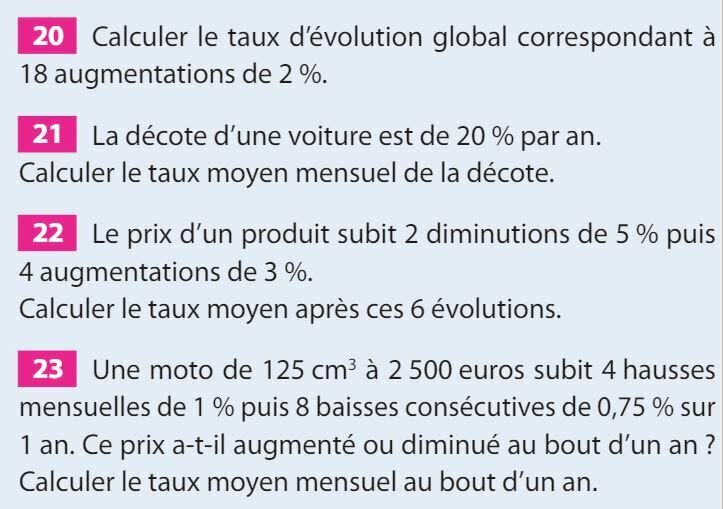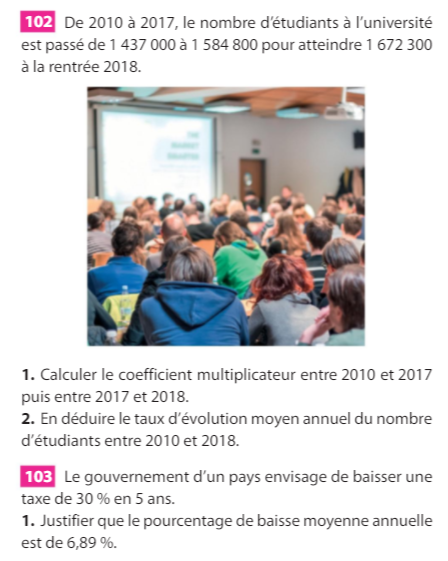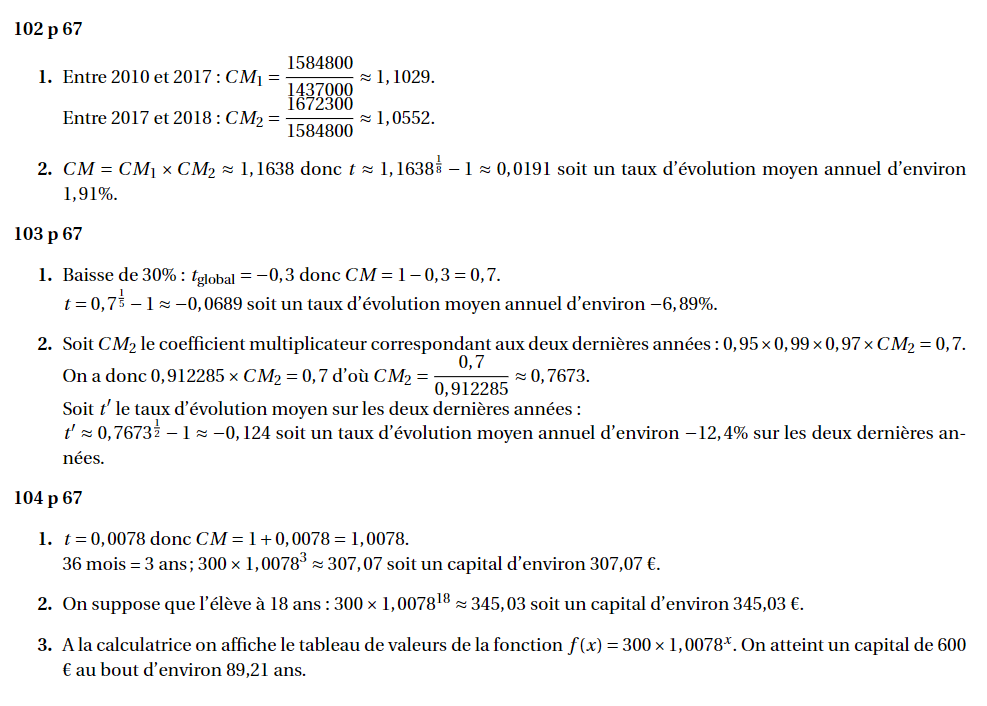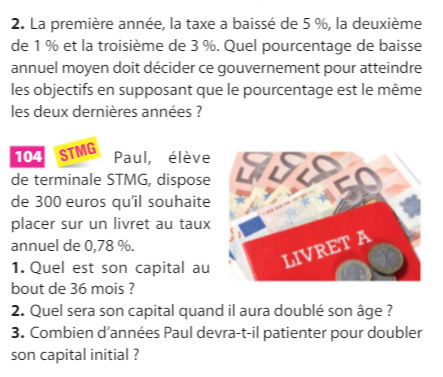
Rappels sur le coefficient directeur correspondant à n évolutions
Taux d'évolution moyen équivalent à n évolutions
Exemple :
On considère trois évolutions successives :
- Une hausse de 5%.
- Une hausse de 8%.
- Une baisse de 11%.
On cherche à déterminer le taux d'évolution moyen équivalent à ces trois évolutions successives.
On détermine d'abord le coefficient multiplicateur global correspondant à ces trois évolution successives :
- Une hausse de 5% : \(CM_1=1,05\)
- Une hausse de 8% : \(CM_2=1,08\)
- Une baisse de 11% : \(CM_3=0,89\)
Pour cela on multiplie les coefficients multiplicateurs :
\(t\), le taux d'évolution moyen vérifie l'égalité suivante :
Soit un taux d'évolution moyen d'environ 0,3%.
Formule à connaître :
Exemple :
On veut calculer le taux d'évolution moyen annuel correspondant à une hausse globale de 20% en 10 ans.
Ici le coefficient multiplicateur global est \(CM = 1,2\) et \(n=10\).
On a donc :
soit un taux moyen annuel d'environ 1,84%.

Ici le coefficient multiplicateur global est \(CM = 0,8\) et \(n=12\).
On a donc :
soit un taux mensuel moyen d'environ \(-1,84\)%.

Ici le coefficient multiplicateur global est \(CM = 0,95^ 2\times 1,03^4\) et \(n=6\).
On a donc :
Soit un taux moyen d'environ 0,26%.
Le coefficient multiplicateur global : \(CM = 0,95^2\times 1,03^4\approx 1,0158\).

Ici le coefficient multiplicateur global est \(CM = 1,01^ 4\times 0,9925^8\) et \(n=12\).
\(CM<1\) donc ce prix à diminué au bout d'un an.
Soit un taux moyen d'environ \(-0,17\)%.
Le coefficient multiplicateur global : \(CM = 1,01^ 4\times 0,9925^8\approx 0,9798\).
Coefficient multiplicateur correspondant à une basse de 0,75% :


Le taux d'augmentation est environ égal 8%.

soit un taux global d'environ \(-0,89\,\%\)
soit un taux moyen d'environ \(-0,1\,\%\)


soit un taux moyen annuel d'environ \(-0,044\,\%\)

soit un taux moyen annuel d'environ \(-42,26\,\%\)

soit un taux d'endettement en 2030 d'environ \(0,04\,\%\)













